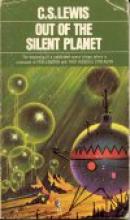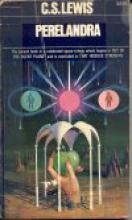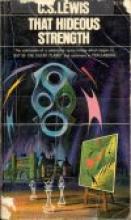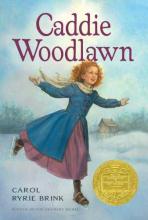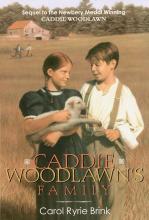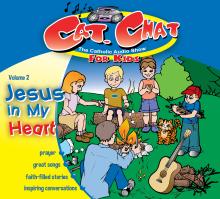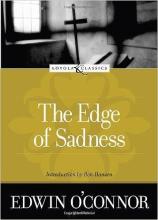No name
Out of the Silent Planet
Perelandra
Perelandra is Venus. Ransom gets sent to Venus on a mission. Of course it takes him some time to get settled with the new surroundings again.
While Mars was an old and mostly ruined world Venus is brand new. The clouds hide a lush tropical paradise. And Ransom is to see to it that this world's "Eve", temporarily separated from her "Adam" for this adventure, is kept from the fall. There is no guarantee. In fact, Ransom bears the same, human, form as the tempter - none other than Weston. But he is more often called the Tempter and the Un-man. He is, like the serpant from Eden, a possessed thing.
Lewis explores original sin AND original good. Having read this in seventh grade, this was the first book that really made me think about the latter a lot. It is a fascinating 'world' to explore. There are incredibly lengthy debates that are actually exciting to read. How can Ransom convince her to choose good when she knows nothing of the other option? How does one justify the good to the just? It is an exploration in first principles.
This book could be read as early as 7th grade. But it would be better understood by high school age.
That Hideous Strength
Caddie Woodlawn
Caddie Woodlawn is the story of a young tom-boyish girl who grew up in pioneer Wisconsin during the Civil War (this story predates the first book of the Little House series by about 25 years – but they are quite close geographically). Caddie's father was the grandson of an English Lord, but as his mother was from the lower classes, his father was disowned and the family grew up impoverished. He emigrated to America where he married a charming Boston lady with whom he raised a family of eight children. They moved to Wisconsin when Caddie (short for Caroline) was very young. Soon after their move and still before the story begins, they lost their five year old girl due to her sickly "constitution." Because of this, Caddie's parents decide to let her grow up in the out-of-doors where she spends a great deal of time adventuring in their nearby woods with her brothers. (This was quite uncommon for girls in those days.) There they meet real-life Indians and develop a curious friendship with them. They also hear somewhat wild Irish folktales from their golden-hearted Irish farmhand (you may want to read these tales yourself before presenting them to little ones), and are involved in a real-life "Incredible Journey" when their dog, Nero, amazingly returns to them after being lost several states away. Caddie's mother still does have an influence on her daughter and over the course of the story (in which Caddie is 11 years old) Caddie begins to develop a sense of what it means to be a lady, despite her rough ways. Like the Little House books, this story is neither Catholic nor particularly religious, but full of good old-fashioned family values and a proper devotion to parents – you particularly see the children's strong admiration for their father, who is simple, honest, hardworking, understanding, and plays a very active role in his children's daily lives.
The story is written by Caddie's granddaughter who, orphaned at a young age, was actually raised by Caddie and grew up listening to these stories from her grandmother's childhood. This grandmotherly wisdom shows through in the book in the way the stories were selected and told. Click or tap here for our review of Brink's second book, which contains more of the Woodlawns' adventures.
Our family recently enjoyed visiting Caddie Woodlawn Historic Park, near the Minnesota border in Western Wisconsin. It's a very simple place where you can walk through Caddie's house (no tourist guides or anything – you just walk through the empty house on your own) and visit a memorial to Caddie's sister Mary who is buried in an unknown place on the property. Reading this book (and visiting Caddie's house) were good opportunities for me as a mother to reflect on some of John Senior's ideas from the Restoration of Christian Culture on the benefits of a simpler life.
On a related note: I found the movie (of the same name) done by Wonderworks terribly disappointing. Most notably, they took one of my (and apparently the author's) favorite characters – the noble and loving Robert Ireton, and turned him into a mean and cowardly character.
Another reviewer, Suchi Myjak, notes:
Caddie Woodlawn includes the sad story of the Hankinson family. Briefly, Mr. Hankinson married an Indian woman back when this was the frontier and white women were exceedingly rare; however, after many others arrive and the area becomes much more settled, he becomes ashamed of his Indian wife and sends her away back to her tribe. Their three children are left behind and are, of course, sad to lose their mother. The Woodlawn children act with kindness toward these semi-orphaned children and I have no concerns about that aspect. However, when they discuss Mr. Hankinson's behavior among themselves, saying that their own father would not have sent away their mother, the last word on the topic is that Mr. Woodlawn would never have married an Indian in the first place.
This incident is, unfortunately, all too realistic for the time and place, and I don't believe in whitewashing history. But for my own children (who also have a white father and an Indian mother) I opted to wait until they were older to allow them to read this book. When used as a read-aloud, of course, this episode can be skipped if your family also has concerns about it.
Caddie Woodlawn's Family
This is a delightful collection of additional stories about Caddie Woodlawn and her family (and one additional story as explained in the introduction that doesn't quite belong). These stories take place between 1863 and 1866 and so in some places overlap the original stories in Caddie Woodlawn which took place in 1864. Here each chapter stands alone as an interesting and true story and many are very touching and beautiful. The first, from which comes the title Magical Melons, is the story of how the three oldest children discovered a large number of perfect watermelons in the hayloft in the barn. Childishly believing them to have magically appeared there, they quietly devoured a large number of them over the course of several weeks. It turns out that the farm hand Robert Ireton had hidden them there to provide a surprise for the family later in the fall when they would be unexpected. When he went to pull them out there were only a few left and Tom, Caddie and Warren had to sit by while the rest of the family enjoyed what was left of the treat.
This book would make a delightful read aloud for the whole family and should be required reading, along with Caddie Woodlawn, for those studying Wisconsin history.
Cat. Chat: The Catholic Audio Show for Kids Vol. 1
"Cat. Chat." "Cat. Chat." That is all my children have been singing for the last two days, since they received the two Cat. Chat CDs (short for Catholic chats about God). These CD's combine "faith-filled" stories, lively (contemporary Catholic/Christian) songs and heartfelt prayer, all within the context of family life. These kid-appealing CD's also include the family cat, Moses, who introduces the family, makes comments, and closes each session.
In volume one, the characters include the dad and his two children, Josh and Hannah. The mom has passed away some time ago. As the family cozies up in front of the fire, the dad relates a bedtime story of Mary's life, beginning with her Immaculate Conception and concluding with her Coronation in heaven. As he relates the story of her life, bringing to life her joys and sorrows, the children ask questions and make comments. This along with the catchy songs and clever sound effects keeps the pace moving - holding the attention of young listeners while presenting a realistic picture of family life. The dad also asks his children questions and explains difficult points like Mary's Immaculate Conception to lead them deeper into their faith. Through their conversation with their dad, the children come to learn what it means to imitate Mary and say "yes" to God.
Cat. Chat: The Catholic Audio Show For Kids Vol. 2
In volume two, the characters include the dad, his two children, and their cousins, Sarah and Jesse. The setting is a camping trip by a lake. As the family with their cousins gathers around the evening campfire, the dad relates stories of what it means to have Jesus in your heart, and how to imitate Jesus even in difficult moments. My only suggestion is that we discuss with our children that as parents we have already invited Jesus into their "hearts" (souls) when they were baptized as infants. But it is always good for children to meditate on what it means to be a good Catholic and consciously invite him into their hearts. The CD also provided a "teaching moment" for my six-year-old daughter who did not understand why the cousins' dad did not love their mother any more. Along with conversation that deepens your children's faith, songs they like to sing and sound effects that catch their attention, the story will lead them to a greater understanding of what the true "ultimate" in life is.
The Edge of Sadness
At first glance, Edge of Sadness by Edwin O’Connor is a walk down memory lane. A memory of the American Catholic church before Vatican II, before the priest scandals. A lovely, nostalgic read. But the thing that makes this book worthy of the Pulitzer Prize it won in 1962 is the fact that O’Connor’s story is truly ageless. The characters are drawn from humanity, painted with the author’s word-brush so lovingly and carefully that by the end of the book you know each of these folks intimately. And, you like them, in spite of their less-than-virtuous actions. The story centers around a native Bostonian priest, Father Hugh Kennedy, a recovering alcoholic who guides us through the joys and troubles of his life in late 1950s Irish Catholic Boston. Seeing all through the eyes of this humble pastor, the reader is introduced to a wealth of characters: self-made first-generation Irish folks, political hopefuls, fellow priests and “outsiders” such as his Polish curate and a non-Irish, non-Bostonian bishop. The prejudices unveiled are humanely drawn; there's something redeeming in every character, something that Father Hugh finds regardless of their overt actions. Through the book winds a thread of Father Hugh’s own self-examination, a thread that is tested and strengthened by every encounter; encounters which lead Father Hugh just to the brink of despair, to the edge of sadness. But, grace pulls him back from the brink each time. This book, although a hefty 600-plus pages, grips the reader from the first page. It reads quickly and elegantly as the humor and pathos of Catholic American life transcends the era and location in which the story is set. This book is a great read because it shows how American Catholicism was and how it can still be; how the Church is run by humans (who sometimes make mistakes) trying to minister to humans (who sometimes make mistakes) – all with God’s grace and beneficence helping us through. Loyola Classics has added ten provocative questions to the end of the book for the edification of the reader or to facilitate discussion within a book club. These would make for a wonderful “study guide” if used with a teen reading club or individual book study.
Q&A for Lent and Easter
This is a rather unique resource for Lent. It's a quiz book written at three levels of difficulty with all sorts of questions and answers about the Catholic Church's celebration of Lent and Easter. It primarily focuses on Church liturgy, with a very significant focus on the process of Christian initiation, culminating with the Sacraments of Initiation at the Easter Vigil.
These aren't the kind of questions and answers that you would expect your children to memorize in every particular. It's more of an informal format to discuss topics and potential questions relating to Lent and Easter.
Here's a sample page focused on Good Friday:
Level 1:
As at Mass, what prayer begins the Communion Rite on Good Friday?
(a) The Nicene Creed
(b) The Our Father
(c) The closing prayer
Answer (on back):
(b) The Our Father
Level 2:
How can we have Holy Communion without having had a consecration in a Mass of the bread and wine?
Answer (on back):
Consecrated hosts from the Holy Thursday celebration are reserved for this Communion service.
Level 3:
This is the only day of the year that Mass is not celebrated. Why, then, does the Church invite us to receive Holy Communion?
Answer (on back):
The Church's invitation reminds us of the importance of the Eucharist and of our sharing in the Resurrection of Jesus Christ through our reception of His Body and Blood. This reception of Holy Communion provides a tremendous opportunity to express our love and gratitude to Jesus for all that He suffered for us during His passion and death.
This seems especially good as a conversation starter for families to use who are preparing to enter the Church, but could certainly be used for families or CCD classes to simply discuss and familiarize themselves with these Church practices.

